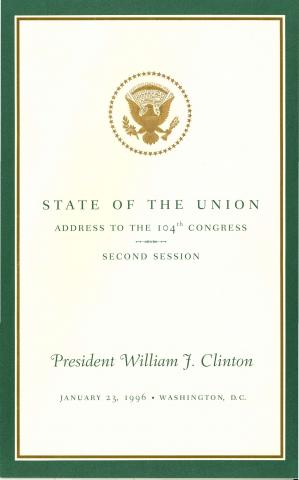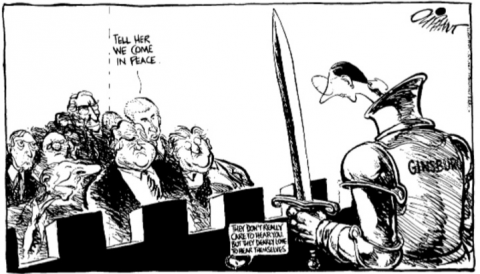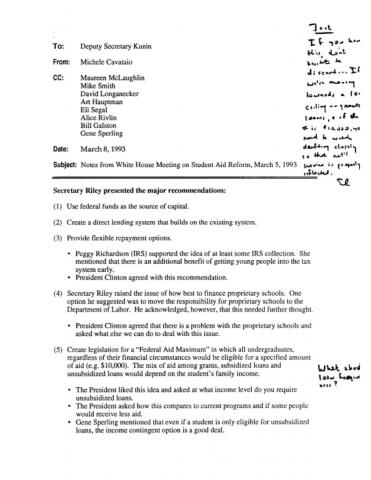
In the opening line of Article II of the United States Constitution, The President is endowed with the executive power of the nation. During his eight years in office, President Clinton fulfilled his role as Chief Executive through a wide variety of activities. Here, in this module, you can read about some of these activities and the ways in which President Clinton acted as the Chief Executive of the United States.
“He shall from time to time give to the Congress information of the state of the union, and recommend to their consideration such measures as he shall judge necessary and expedient”
-United States Constitution, Article II, Section

When Supreme Court Justices pass away or retire from their post on the Court, the President of the United States is tasked with nominating their replacement. After nomination, the nominee must be confirmed by a simple majority in the Senate.
In 1993, with the retirement of Justice Byron White, President Clinton nominated Ruth Bader Ginsburg to the seat. To nominate Ruth Bader Ginsburg, President Clinton held a small ceremony in the White House Rose Garden and spoke to her suitability to become the next Justice of the Supreme Court, calling her “one of our nation’s finest judges, progressive in outlook, wise in judgement, balanced and fair in her opinions.” Click here for the full text of his speech.

After her nomination, Ruth Bader Ginsburg came before the Senate Judicial Committee who questioned her as to her stance on a variety of constitutional issues such as the death penalty, the constitutional right to privacy, and gender equality. The Senate, satisfied with her responses, approved of President Clinton’s nomination by a margin of 96-3. Ruth Bader Ginsburg took the judicial oath on August 10th, 1993 and served on the Court until her death on September 18th, 2020.
“he may require the opinion, in writing, of the principal officer in each of the executive departments, upon any subject relating to the duties of their respective offices”
-United States Constitution, Article II, Section 2
The President of the United States does not directly carry out the work of the executive branch; rather, the executive branch is made up of executive departments, each chaired by a Secretary. These Secretaries, when assembled, make up the Executive Cabinet that advises the President on prudent courses of action for matters of state.
In many cases, the matters at hand are directly related to policy and legislation. For example, a cabinet meeting in March of 1993 focused on reforming the student aid system. In the notes sent to Deputy Secretary of Education Madeleine Kunin, we can see how the discussion between President Clinton and his cabinet proceeded.

Other times, the advice given by the executive cabinet can be of grave consequence, as it was when Anthony Lake, the National Security Advisor, penned a memo to President Clinton regarding options for the use of force in reasserting democratic rule in Haiti. In the memo, Anthony Lake details the size of deployment that would be needed, scenarios for the return of the elected President of Haiti, and some threats that American troops would encounter on arrival.